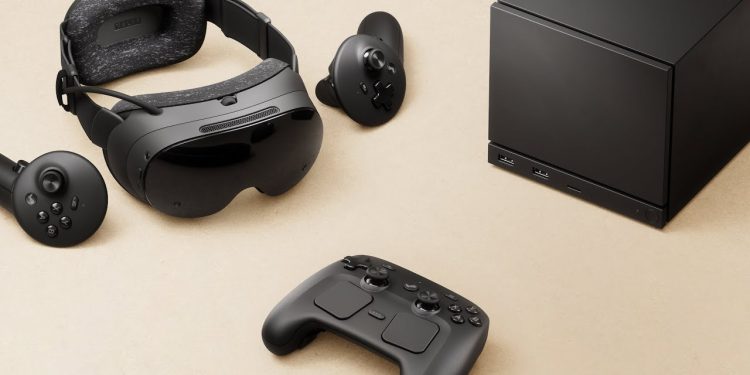Valve has revealed the Steam Machine, a living room-focused portable Steam PC that the company says will launch in early 2026 and deliver roughly six times the power of a Steam Deck. The Steam Machine is pitched as a console-style device for big-screen play that still runs like a PC. It can run SteamOS or any other operating system users choose, which means installing Windows and running Windows apps is on the table. Valve says it will extend its Verified program to indicate how games run on the Steam Machine.
Under the hood the Steam Machine aims for mid-range PC class performance rather than high end desktop levels. The headline hardware includes a semi custom AMD Zen 4 6 core CPU and a semi custom RDNA3 GPU now clocked to sustain higher frequencies than the Steam Deck.
| CPU | Semi-custom AMD Zen 4 6C / 12T
|
| GPU | Semi-Custom AMD RDNA3 28 CUs
|
| RAM | 16 GB DDR5 plus 8 GB GDDR6 VRAM |
| Power | Internal power supply, AC power 110 240V |
| Storage | Two Steam Machine models
Both models include a high speed microSD card slot |
| Wi Fi | 2×2 Wi Fi 6E |
| Bluetooth | Bluetooth 5.3 dedicated antenna |
| Displays | DisplayPort 1.4
HDMI 2.0
|
| USB | Two USB A 3.2 Gen 1 ports in the front
Two USB A 2.0 high speed ports in the back One USB C 3.2 Gen 2 port in the back |
| Networking | Gigabit ethernet |
Valve has not announced pricing. External coverage suggests Valve is aiming for console level pricing rather than desktop price tiers. That would put the Steam Machine in a range where it competes with premium handhelds and mid level consoles rather than high end gaming rigs.
The Steam Machine is positioned between Steam Deck and a full desktop. The GPU carries a 110 W TDP which should allow higher sustained frame rates at 1080p and 1440p than the Deck handles. The choice to support multiple operating systems means the device could run services like Xbox Game Pass if users install Windows, and it makes the Steam Machine a flexible option for people who want PC libraries on a TV without a tower setup.
Console makers have been flirting with PC style hardware recently and some executives have discussed blurring platform lines. This context helps explain why Valve designed a device that looks and acts like a console while keeping the underlying PC openness. For background on that industry trend see the recent discussion about consoles as PC hybrids about Microsofts strategy.
Buyers who want a living room PC that stays put and plugs straight into a TV will find the Steam Machine compelling. Gamers who need the absolute best frame rates at 4K or want the latest GPU features will still need a desktop. Valve appears to be leaning into accessibility and library compatibility rather than chasing flagship desktop performance.
Comments and feedback are welcome and readers can follow the conversation and the site on X, Bluesky, and YouTube.

























